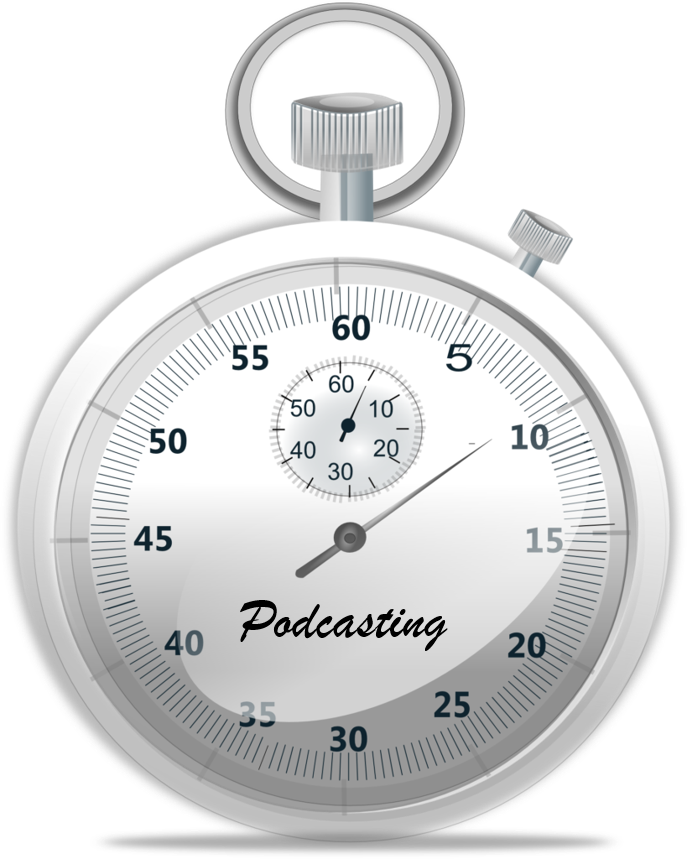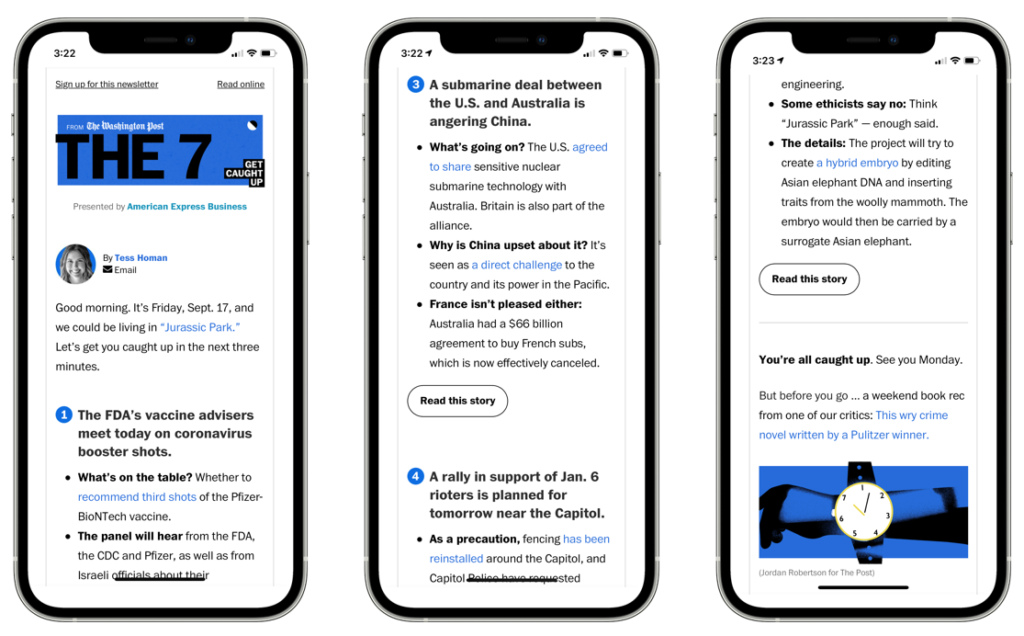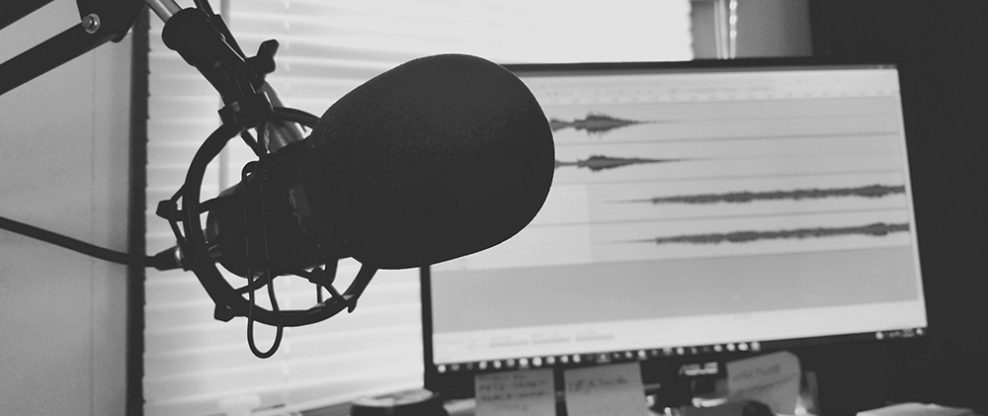(Hypebot) — Here Fred Jacobs explores how changing trends in audio consumption point to a need for those creating such content in the music industry to prioritize brevity in their podcasts and newsletters.
Guest post by Fred Jacobs of Jacobs Media Strategies
A blog post last week – “It Looks Like Everybody’s Going Public (Radio)” – looked at two fast-emerging news platforms for public radio stations and their well-respected networks:
Daily morning podcasts and newsletters
Both are rapidly appearing all over the nation’s media landscape, and for good reason: they are immensely popular and both are on-demand products. Public radio fans can access and listen to them whenever they like – not when the program schedule says it’s time to tune in.
Yet, there is precious little research available to guide producers and publishers of either of these news formats. How long should a newsletter be? What’s the optimal length for a podcast?
That latter question has become a cliché at Podcast Movement and other events focused on on-demand content. Most pundits answer this all important question to this effect:
Podcasts should be long enough to cover the topic, but short enough not to bore the audience.
[MORE: Short Attention Spans Are Dramatically Altering Songwriting: Here’s How]
Great. For most podcasters, this isn’t exactly helpful.

A Pacific Content content analysis from 2019 found the average length of a podcast, based on nearly 19 million episodes from more than 600,000 podcasts, is just north of 41 minutes long. That represents a decrease of a couple minutes in a study conducted two years earlier. Still, 40 minutes is a long time, especially in our fast-paced lives.
That’s precisely how the Washington Post sees – or hears – it.
They’ve got a couple of new products where the focus is on length and strength – making sure their already compelling content fits into the “life space” of their audience. “The 7” is a newsletter delivered via email. It’s similar to a concept many outlets – radio, TV, newspaper – are doing – a countdown of the seven most important things you need to know about – today.
“The 7” drops every weekday morning – yes, at 7 a.m. ET. It’s sponsored through the end of 2021 by American Express, and it’s meant to be read on the fly. Its debut episode published earlier this month was a mere 400 words. That’s one heckuva lot shorter than the competitive product by the New York Times – which can run in the neighborhood of 1,700 words.
The Post is stealing a page from radio, banking on the morning routine to put their newsletter on their readers’ every day agendas. As Coleen O’Lear, WaPo’s head of mobile strategy, explains to Digiday, “Habit is one of our biggest goals. We want to have a deeper habit with our current readers, as well as track new audiences who might not come to The Post every day and help them navigate the news and navigate their day.” Like a morning show, except this one lands in your email box, and can be consumed on any number of screens, including a smartphone:

Shorter newsletters served up by email is core to the Post’s readership engagement strategy. And it fits the multi-tasking lifestyles of their readers, requiring only about three minutes of their time.
And there’s an audio component. WaPo provides its audience with the option to read or listen to “The 7.” They can also choose to receive a push notification when it’s published.
But that’s not all. The Post has revamped its newsletter called “202” (D.C.’s area code). Again, their editor of these newsletters, Rachel Van Dongen, says their shorter length is part of their strength.
The new word goal of “202” is 1,400-1,500 words, a reduction from the usual 2,000 length. And Van Dongen cites audience research as the main driver for newsletter brevity.
As she reveals to Axios: “It’s something that our readers wanted. This is a really busy target audience and there’s so much competition in this space. We’re trying to provide the best quality journalism in the shortest format.”
Less is indeed more.
And here’s another angle, straight out of the radio playbook. The newly designed “202” is more personality-driven. WaPo isn’t going to just promote their journalism; it’s clear they’re marketing their journalists.
Again, Van Dongen explains the strategy: “We’re leaning into personalities. In these newsletters specifically and around town, people want to connect with the authors and have two-way communication. We are leaning into that with new branding around the authors.”
You can see that in the logo treatment for “202,” with Jackie Alemany front and center. She’s a Millennial, a well-known, fast-rising Post star, bolstered by regular appearances on cable news shows.
Next up for the Post and its “202” franchise is a podcast hosted by author James Hohmann. More new audio products are also in the consideration stage, and you can bet they won’t drag on too long. As WaPo builds its audio reputation on substance and brevity, its audience will become accustomed to these core content attributes.
This intel from Digiday and Axios is revealing, but there is a lot more we don’t know about WaPo‘s plans. But one thing is certain – they’re doing research. And a lot of it.
From studying usage data to conducting their proprietary quantitative and qualitative interviewing, they’ve got a bead on digital media trends and how their audience consumes content.
For both broadcasters and podcasters, monitoring the Post’s activities is just plain smart. Same with the New York Times. They’re conducting and commissioning more research than most radio operations and podcast networks.
So, four main takeaways here, for commercial, public, and Christian radio, all of which can reap important lessons:
- Length matters – I’m hearing those “duhs” in unison, especially among PPM programmers. But this “best practice” from the Post shouldn’t be lost on any of us. Whether it’s podcasts, newsletters, or features, respecting the audience’s time pressures is a key to sampling and consumption (better known as cume and TSL). Challenging the “40 minute podcasting rule” is a great place to start.
- Personality is a main driver – As WaPo has come to realize, putting a face on their news products is key to adoption and recognition. That may run counter to the way most newspapers have traditionally operated, but it speaks volumes about what matters to consumers. More people will remember Jackie Alemany than they will “202.” And that begs the question of when radio broadcasters will wise up, and rethink the cost-cutting, belt-tightening measures of the past several years that always seem to involve jettisoning personalities. Every time an on-air position is eliminated, so goes a branding, loyalty-building, and appointment-setting opportunity.
- Newsletters work – As we pointed out in last week’s post about public radio, they’re a great tool for attracting new users. WaPo now has about 50 of them. And newsletters aren’t just for public radio. Why couldn’t music stations create their own lifestyle newsletters focused on local things-to-do or centered on music news and discovery, including helpful audio links?
- Email is the engine – At Jacobs Media, we may seem like a broken record, but none of this works without smart email database strategies. Rather than an afterthought, email is the digital transportation that keeps information, marketing, and communication flowing. And it’s free (for the most part). As we learn every year with our email-driven Techsurveys, some stations/companies get it. But many don’t.
So-called “best practices,” for news, entertainment, and other content creation and distribution are evolving as consumers change.
Understanding why the big boys and girls do what they do can help radio broadcasters (and yes, podcasters) understand the evolving ecosphere around them.
All these concepts are designed to further develop brands, grow fan engagement, and open up new channels for additional revenue and sponsorship opportunities. Rather than look at them as “time sucks” or more expense, it is far more practical and strategic to think about them as new content and delivery platforms that didn’t exist a few years ago.
As O’Lear and Van Dongen from the Washington Post would readily concur, a strong brand with great content and personality can be extended in more directions, generating revenue, fan connection, and habitual usage.
As we learned in 2020, change happens.
To remain viable, relevant, and profitable, radio needs to change along with it.
Fred Jacobs: President & Founder at Jacobs Media Fred Jacobs founded Jacobs Media in 1983, and quickly became known for the creation of the Classic Rock radio format.
Jacobs Media has consistently walked the walk in the digital space, providing insights and guidance through its well-read national Techsurveys.
In 2008, jacapps was launched – a mobile apps company that has designed and built more than 1,300 apps for both the Apple and Android platforms. In 2013, the DASH Conference was created – a mashup of radio and automotive, designed to foster better understanding of the “connected car” and its impact.
Along with providing the creative and intellectual direction for the company, Fred consults many of Jacobs Media’s commercial and public radio clients, in addition to media brands looking to thrive in the rapidly changing tech environment.
Fred was inducted into the Radio Hall of Fame in 2018.





























